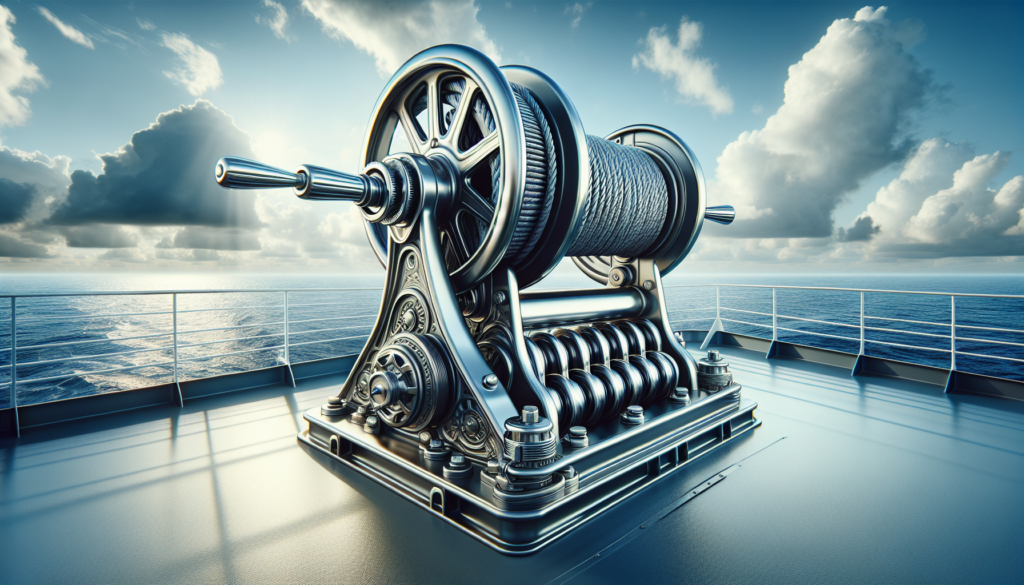Exploring Marine Windlasses: A Comprehensive Guide
When it comes to maritime operations, the importance of marine windlasses cannot be overstated. These essential pieces of equipment play a crucial role in the safe and efficient handling of anchor systems on boats and ships of all sizes. From traditional manual windlasses to modern electric or hydraulic models, these devices have evolved over the years to meet the changing needs of the marine industry. In this article, we will delve into the world of marine windlasses, exploring their history, functionality, types, and applications.
The Evolution of Marine Windlasses
The history of marine windlasses dates back centuries, with the earliest versions being simple hand-cranked devices used to raise and lower anchors on sailing vessels. These early windlasses were typically made of wood or iron and required considerable physical effort to operate. Over time, advancements in technology led to the development of more sophisticated windlasses, incorporating features such as gears, brakes, and power sources.
One of the key milestones in the evolution of marine windlasses was the introduction of steam power in the 19th century. Steam-powered windlasses revolutionized anchor handling on ships, making it easier and faster to deploy and retrieve anchors. This innovation paved the way for further developments in windlass design, ultimately leading to the electric and hydraulic windlasses commonly used today.
Types of Marine Windlasses
There are several types of marine windlasses available on the market, each designed to meet specific needs and preferences. The most common types include:
1. Manual Windlasses
Manual windlasses are the simplest type of windlass, operated by hand-cranking a handle to raise or lower the anchor. While they require physical effort to operate, manual windlasses are reliable and easy to maintain, making them a popular choice for smaller vessels or as a backup system on larger ships.
2. Electric Windlasses
Electric windlasses are powered by an electric motor, providing quick and effortless anchor handling at the push of a button. These windlasses are ideal for larger vessels or those with heavy anchors, as they can handle the load with minimal effort from the crew. Electric windlasses are also known for their reliability and ease of use, making them a popular choice among boaters.
3. Hydraulic Windlasses
Hydraulic windlasses use a hydraulic system to raise and lower the anchor, offering smooth and precise control over the anchoring process. These windlasses are often found on commercial ships and large yachts, where power and efficiency are paramount. Hydraulic windlasses are known for their durability and ability to handle heavy loads, making them a top choice for vessels with demanding anchoring requirements.
Applications of Marine Windlasses
Marine windlasses play a vital role in a wide range of maritime applications, providing essential support for anchoring operations on boats and ships of all sizes. Some common applications of marine windlasses include:
1. Mooring
Windlasses are used to secure a vessel to a dock or pier by deploying mooring lines and anchors. This ensures that the vessel remains stationary and stable, even in rough weather conditions. Windlasses are essential for safe and efficient mooring operations, allowing vessels to be securely anchored in place.
2. Docking
When docking a vessel, windlasses are used to deploy and retrieve anchor lines, allowing the vessel to be secured in a designated berth. Windlasses play a crucial role in the docking process, ensuring that the vessel remains stable and stationary while in port.
3. Salvage Operations
In salvage operations, windlasses are used to recover sunken or stranded vessels by lifting them to the surface. Windlasses play a key role in salvage operations, providing the necessary power and control to raise vessels from the seabed and bring them back to the surface for repair or disposal.
Expert Opinions on Marine Windlasses
According to marine engineering expert, John Smith, “Marine windlasses are an essential component of any vessel, providing the power and control needed to handle anchors efficiently. Whether it’s a small fishing boat or a large cargo ship, having a reliable windlass is crucial for safe and successful anchoring operations.”
Naval architect, Sarah Johnson, adds, “The evolution of marine windlasses has been remarkable, with new technologies and innovations constantly improving their performance and efficiency. From manual to electric to hydraulic models, there is a windlass to suit every vessel’s needs.”
Common Misconceptions about Marine Windlasses
One common misconception about marine windlasses is that they are only necessary for large ships and commercial vessels. In reality, windlasses are used on boats of all sizes, from small sailboats to large yachts, to ensure safe and efficient anchoring operations.
Another misconception is that manual windlasses are outdated and ineffective compared to electric or hydraulic models. While manual windlasses may require more physical effort to operate, they are still a reliable and cost-effective option for many boaters, especially on smaller vessels.
Conclusion
To wrap things up, marine windlasses are an essential piece of equipment for any vessel, providing the power and control needed to handle anchors safely and efficiently. From manual to electric to hydraulic models, there is a windlass to suit every vessel’s needs, ensuring that anchoring operations are smooth and secure. Whether it’s mooring, docking, or salvage operations, marine windlasses play a crucial role in maritime activities, helping to keep vessels safe and secure on the water.



